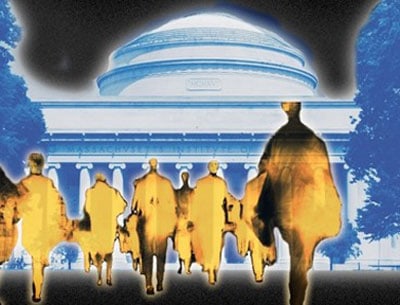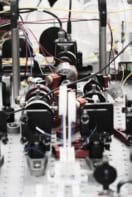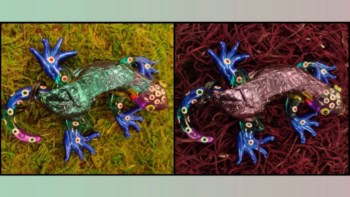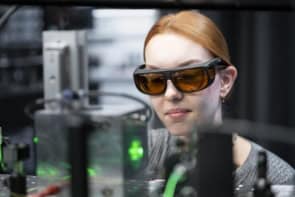
Researchers at Massachusetts Institute of Technology (MIT) have demonstrated the highest frame rate yet for a dynamic hologram that can recreate evolving 3D scenes. The breakthrough means that holographic television is now tantalizingly close to industry frame rates at a time when 3D cinema is fully back in vogue.
A big appeal of holograms over established 3D image projection is that the viewer can see the effect unaided. They do not need to wear special glasses where each lens creates a slightly different image by letting through light polarized in different directions. Instead, holographic displays emit light in such a way that it produces many perspectives that allow the viewer to see the “object” from multiple angles.
In November, a group of researchers based at the University of Arizona and Nitto Denko Technical Corporation in California made the headlines when they unveiled the world’s first “telepresence” system capable of reproducing a changing 3D scene every 2 seconds. The system worked by surrounding an object with 16 cameras and writing these images into a polymer-based screen, which can project when illuminated with LEDs.
Filming deep scenes
Now, a group at MIT’s Media Lab under the leadership of Michael Bove Jr has raised the bar once again by creating a system that can reproduce a 3D scene 15 times every second. And the MIT system uses a novel design that only requires one camera – a commercially available range-finding camera that can record both the luminance and depth of a scene.
Bove’s team takes this footage and sends it via the internet to a PC that has been fitted with three graphics processing units. The units have been programmed with an algorithm that can compute the diffraction patterns needed to reproduce the moving 3D images. These patterns are then recreated on a projection screen using arrays of components known as “wafels”, which can control the intensity of light emitted in all directions.
Bove tells physicsworld.com that, having only started developing the latest version of the technique during the week after Christmas, the research has progressed at breakneck speed. “It was literally only last Wednesday that we managed to improve the performance from 7 frames per second to 15.” He says that he is confident that his team can boost this rate even higher to the 24 frames per second of feature films or the 30 frames per second of television.
Webcam hologram
Bove believes that, within the next few years, his group’s method of creating dynamic holograms could become available commercially at the scale of standard laptop screens. It could be used by scientists and other professionals to visualize data in 3D, as well as for communications and videogaming. “There’s something very compelling for me about the idea of having a hologram coming out of a computer, with images coming via webcam, for instance,” he says.
The group is looking to develop alternative versions of the diffraction screen at lower costs, and is seeking to design a laptop-scale screen that retails at around $200 (approximately £125). More difficult, however, will be scaling up the devices to the size of cinema screens, because it is difficult to generate complicated diffraction patterns on larger scales.
The idea of real-time telepresence has captured the imagination ever since the 1970s when the special effects used in the first Star Wars film included a hologram of Princess Leia making a distress call after her ship had fallen under attack by the Empire. Bove and his team recreate this scene in a demonstration of their technology, as can be viewed in the video above.
Bove is currently presenting his group’s holography system at Consumer Electronics Show, which is taking place this week in Las Vegas, US.



